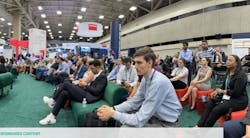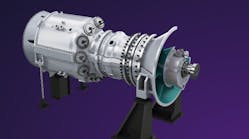To change the world, first we must change the priorities.
This paraphrase of Mark Twain may hardly be brand new, but it is always apropos to nearly any pivotal moment in history. And surely we have reached one at the crux of climate change and weather impacts.
One thing leads to another. The world is heating up and, while some may argue the causes, hardly any doubt exists on whether the rise of man-made energy in the industrial age has contributed a major part to the recorded rise in global temperatures.
So priorities are changing from purely focusing on power generation and customer delivery to a radical shift in energy resources from carbon-based fuels to zero-carbon options such as solar, wind and battery storage, as well as the digital transformation to analyze and control these variables.
All of these were key topics of wary concern at the recent DISTRIBUTECH International (DTECH) in Dallas. If we at T&D World and EnergyTech.com might be so bold, the main issues can be boiled down into Top Five Trends on topic at the event. And they are, in no particular order:
The Need for Speed: The Challenges of Fast Data and How to Make Sense of It
Data is king of resources these days. Digital tools and analytics are reshaping the utility world, bringing visionary tools into play such as sensoring, machine learning, predictive maintenance, artificial intelligence and control and operational data gathering and organization.
The last word is important. For, as many experts said at DTECH, reams of data surely offer comprehensive looks into how the grid operates, but organizing and making that information useful is really the only thing that ultimately matters. Datum needs eyes on the ground to prioritize it, and storage in the cloud to protect it.
The Clean Energy Conundrum: Renewable yet Resilient
Recently, the U.S. Energy Information Administration reported that utility-scale wind and solar together accounted for 20 percent of the nation’s electricity resource mix in April. The portion was historic, putting those renewables basically equal with nuclear and coal-fired power. Together with nuclear and hydropower, it meant that generation resources with zero-carbon emissions were powering close to 45 percent of the power grid.
We’re getting closer, right? Of course, April was a good month with presumably many more to come. And yet those responsible for either operating or supplying grid technology are rightly concerned about the challenges of intermittent generation. Deep fluctuations and weather-related shutdowns put strain on the ability to maintain frequency on the grid and stress on conventional power resources now required to cycle up and down in response to the intermittencies.
Operational data and quick-response analytics offer some crucial assistance. Much more will be needed as the grid gets more renewable and less baseload.
The Next Frontier: Bringing Law and Order to the Grid Edge
Rooftop solar, community solar, microgrids, behind the meter, home EV charging. All of these and more are exciting new chapters in the energy transition age. But, as so many noted at DTECH, the macro grid is not totally ready for this wild and wooly grid edge future.
Upgrades and overhauls in GIS mapping certainly need to be on the agenda for utilities and their partners. Distributed energy management systems and interconnection protocols will be mission critical as some of that excess grid-edge electricity or unpredictable interaction (such as EV charging infrastructure) is directed right back into the main system.
Which brings us to. . .
Prosumer Appreciation Week
This rising tide of electricity customers who will no longer solely rely on their utilities, as noted above, could swamp the grid. More and more consumers, particularly in states incentivizing the practice, are acquiring rooftop solar or participating in community solar and microgrid projects. The good old one-way highway is fast becoming a bi-directional superhighway with electrons moving back and forth. The prosumer will benefit by deploying his or her own generation back into the main distribution systems.
Some companies exhibiting at DTECH announced new programs and technologies to reach the prosumer sector. Some also are offering both digital and physical tools to better deploy and decode the sometimes mysterious goings on at the edge of the grid.
Workforce Worries: Who’s Going to Handle all of This in the Future?
The proverbial and truly omnipresent supply chain issues were front and center topics for OEMs and other industry leaders at DTECH. And yet lurking beyond all of that was a major need in the future: a newly trained and focused workforce for the energy transformation to net zero.
Some are truly concerned about the biggest priority of all—people, or the lack of them to handle the Grid 2050 era. How do utilities attract and maintain a committed new generation of workers, who themselves will also require wisdom and institutional memory from older workers who have weathered the journey from baseload to bi-directional, digital transformation and beyond?
Big question, because many in the Baby Boomer generation are retiring, while the Great Resignation also has depleted workforces in multiple sectors. Utilities, OEMs, EPCs and IoT firms will need to employ great diligence and care in developing and onboarding a new generation workforce.
In the end, coming up with Five Trends may seem a little too trite and limiting. So much more is in play as the energy sector faces paramount challenges in both decarbonizing the power grid, while also balancing security and resiliency priorities.
And there’s that word again: priorities. The grid planners of today and tomorrow will have many of those to juggle and keep in sight if they are to stay relevant for decades to come.
Sponsored by IBM Corporation





